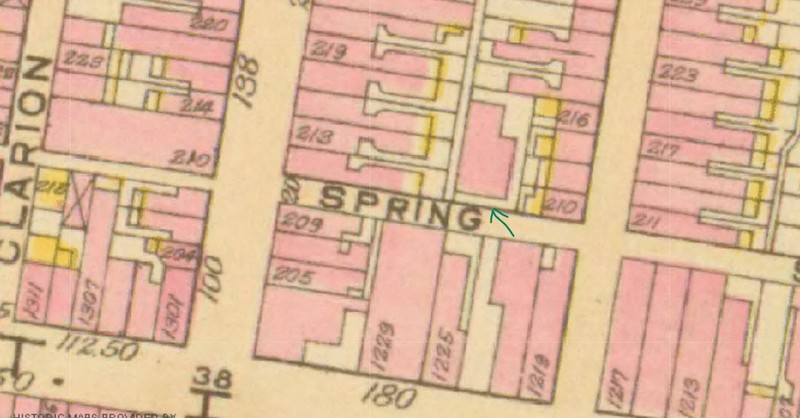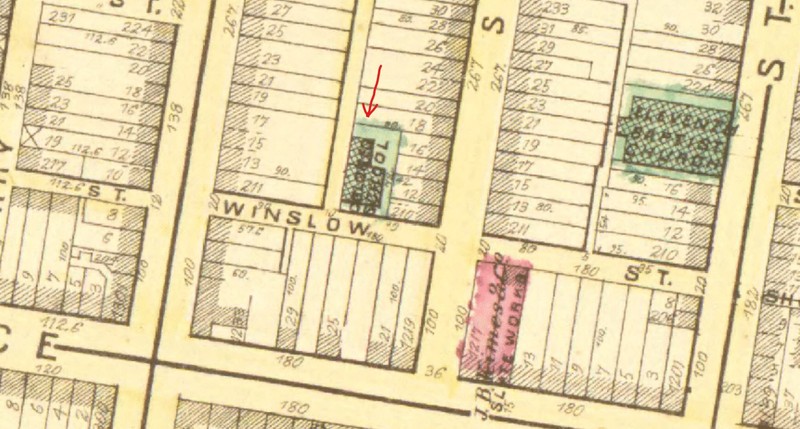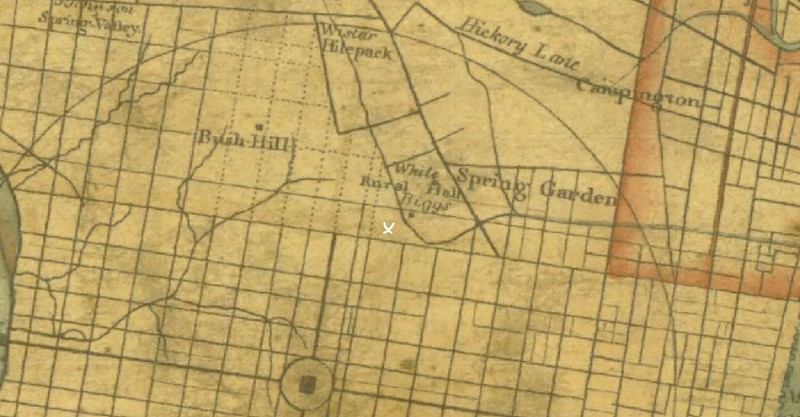Adelphi School
Introduction
Text-to-speech Audio
Images
Adelphi School (green arrow) on 1910 Bromley Philadelphia Atlas map

Adelphi School (red arrow) on 1875 Hopkins Philadelphia Atlas map

Adelphi School location (white x) on 1808 Hills map of Philadelphia

Backstory and Context
Text-to-speech Audio
The Adelphi School on Wager Street was owned and run by The Philadelphia Association of Friends for the Instruction of Poor Children in 1847. The association was founded in 1808 and established a free school for White children, called the Adelphi School, on Pegg Street, east of Second Street. Once the city began a program for public schooling, the Association no longer needed to fund education for White children, so a program for "colored" children was begun. The school house on Wager Street was built in 1831 and was two stories tall, 30 feet wide and 40 feet deep. The Adelphia School held two branches by 1847: a school for African-American girls and an infant school for African-American children of both sexes.
The Society of Friends ("Quakers") regularly took a census of the African-American population in Philadelphia, to support their anti-slavery position. One census was taken in late 1847 and estimated that about 64 percent (1,940 of 4,500) of African-American school-aged children in the city age five to fifteen were attending school. There were ten public or charity schools within Philadelphia in 1847. The Adelphi School on Wager Street was one, with about 150 pupils. Over 500 attended a public grammar school on Lombard Street, with around 200 each at a public primary school on Gaskill Street, the Shiloh Baptist Infant School on Clifton and Cedar Streets, and the Friends' School on Raspberry Street. A public primary school on Brown Street about 150 pupils enrolled. Roughly 75 students of color were enrolled in the Moral Reform School and in a public school on Oak Street in West Philadelphia. Another 30 attended the Bedford Street School; the school wasn't named for another ten students.
The street was still known as "Wager Street" between Twelfth and Thirteenth Street on the 1862 Smedley map from the Philadelphia Atlas.
The 1875 Bromley Philadelphia Atlas shows a "Colored School" at the Adelphia School location on what had been renamed as "Winslow Street."
The street now known as Race Street was still named Winslow Street in 1895 on the Bromley Philadelphia Atlas map. By 1910, the street had been renamed to Race Street.
Sources
[see pdf of 1849 pamphlet - p 22 re schools; maybe adelphi was not this bldg then - to check old maps for old street names]
https://www.philageohistory.org/tiles/viewer/
https://www.philageohistory.org/tiles/viewer/
https://www.philageohistory.org/tiles/viewer/
